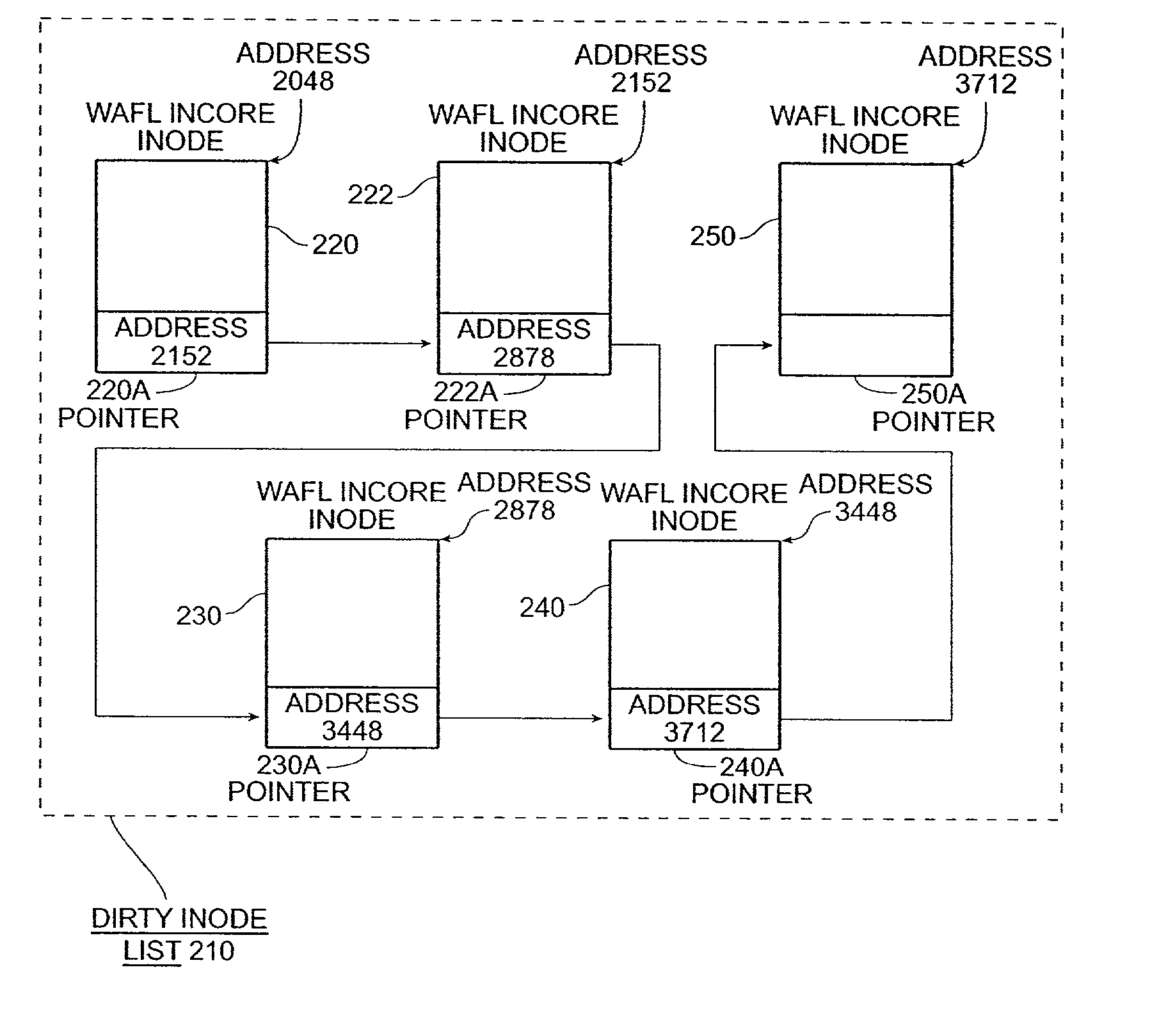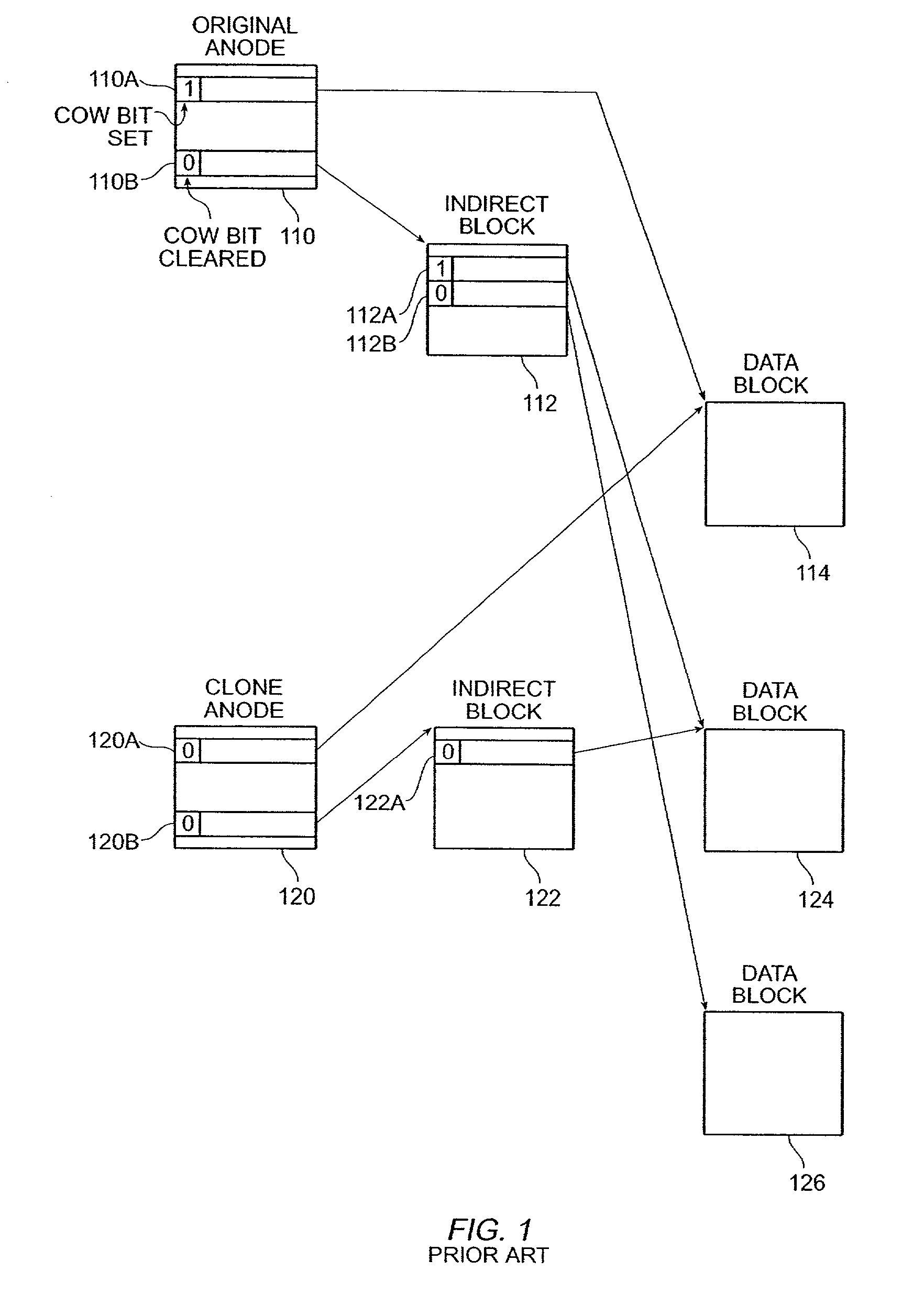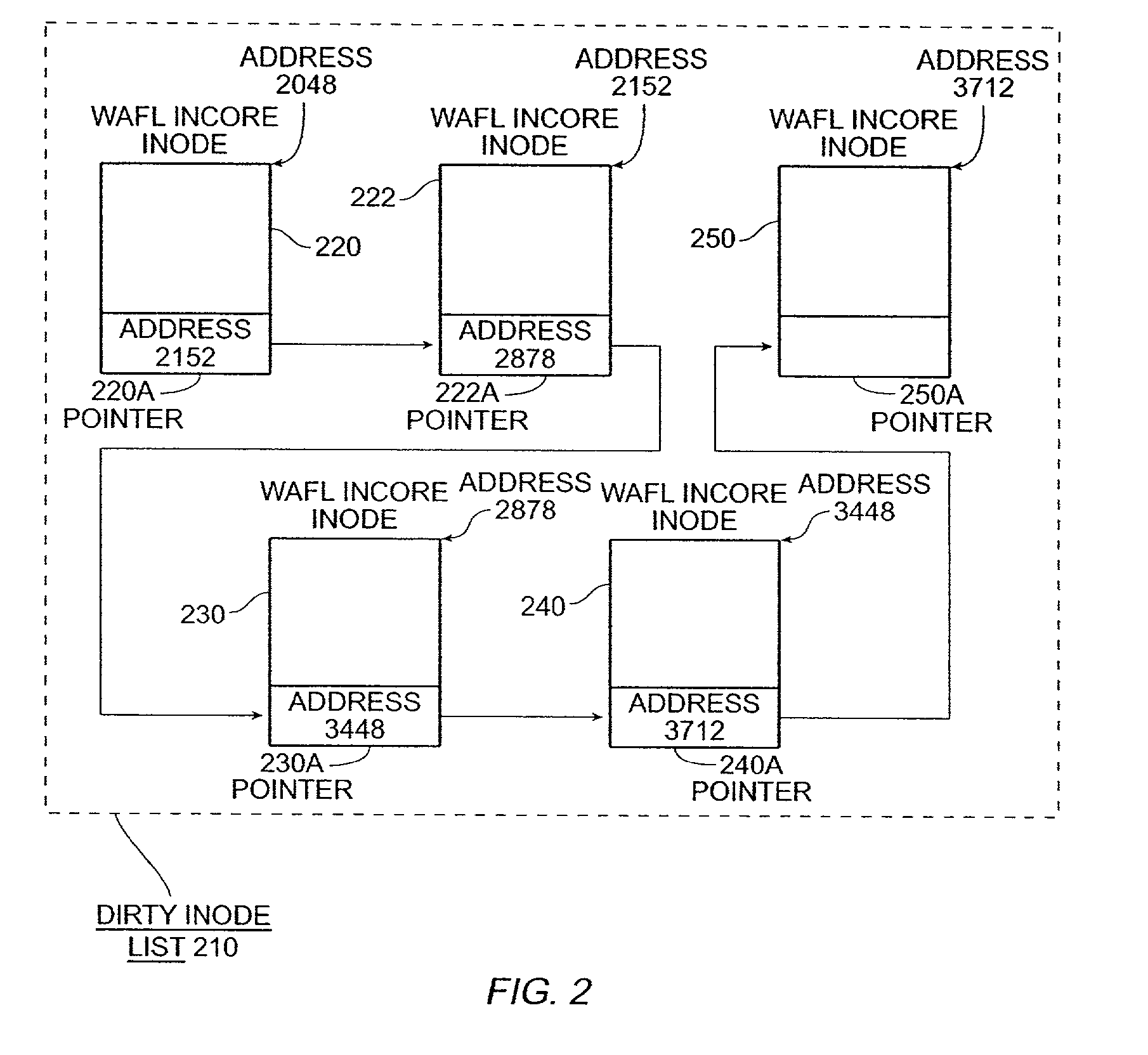Write anywhere file-system layout
a file system and file system technology, applied in the field of write anywhere file system layout, can solve the problems of difficult and time-consuming problems in managing any file server, inconvenient operation, and inability to achieve high performan
- Summary
- Abstract
- Description
- Claims
- Application Information
AI Technical Summary
Benefits of technology
Problems solved by technology
Method used
Image
Examples
Embodiment Construction
[0050] A system for creating read-only copies of a file system is described. In the following description, numerous specific details, such as number and nature of disks, disk block sizes, etc., are described in detail in order to provide a more thorough description of the present invention. It will be apparent, however, to one skilled in the art, that the present invention may be practiced without these specific details. In other instances, well-known features have not been described in detail so as not to unnecessarily obscure the present invention.
Write Anywhere File-System Layout
[0051] The present invention uses a Write Anywhere File-System Layout (WAFL). This disk format system is block based (i.e., 4 KB blocks that have no fragments), uses inodes to describe its files, and includes directories that are simply specially formatted files. WAFL uses files to store meta-data that describes the layout of the file system. WAFL meta-data files include: an inode file, a block map (blkma...
PUM
 Login to View More
Login to View More Abstract
Description
Claims
Application Information
 Login to View More
Login to View More - R&D
- Intellectual Property
- Life Sciences
- Materials
- Tech Scout
- Unparalleled Data Quality
- Higher Quality Content
- 60% Fewer Hallucinations
Browse by: Latest US Patents, China's latest patents, Technical Efficacy Thesaurus, Application Domain, Technology Topic, Popular Technical Reports.
© 2025 PatSnap. All rights reserved.Legal|Privacy policy|Modern Slavery Act Transparency Statement|Sitemap|About US| Contact US: help@patsnap.com



